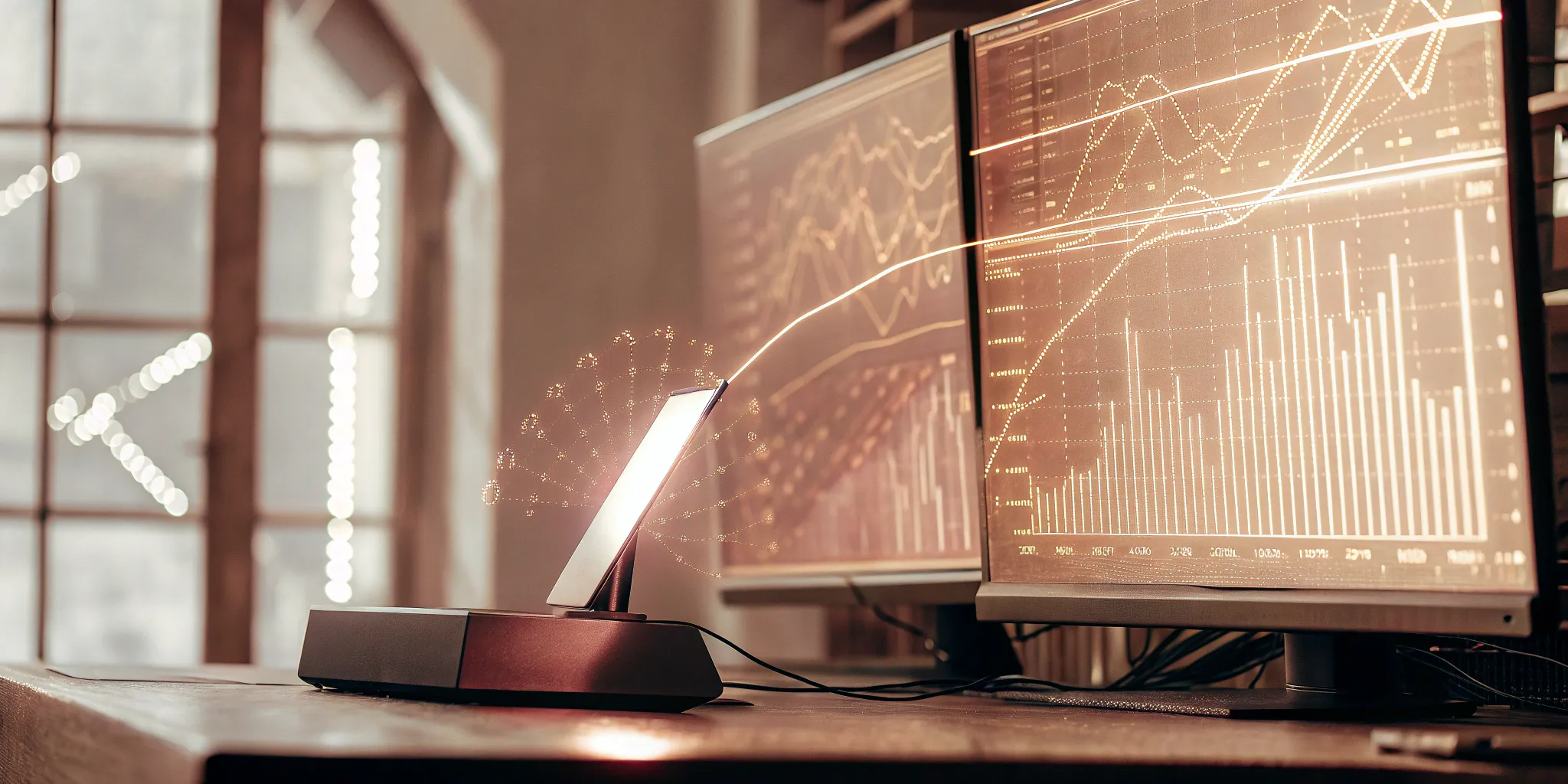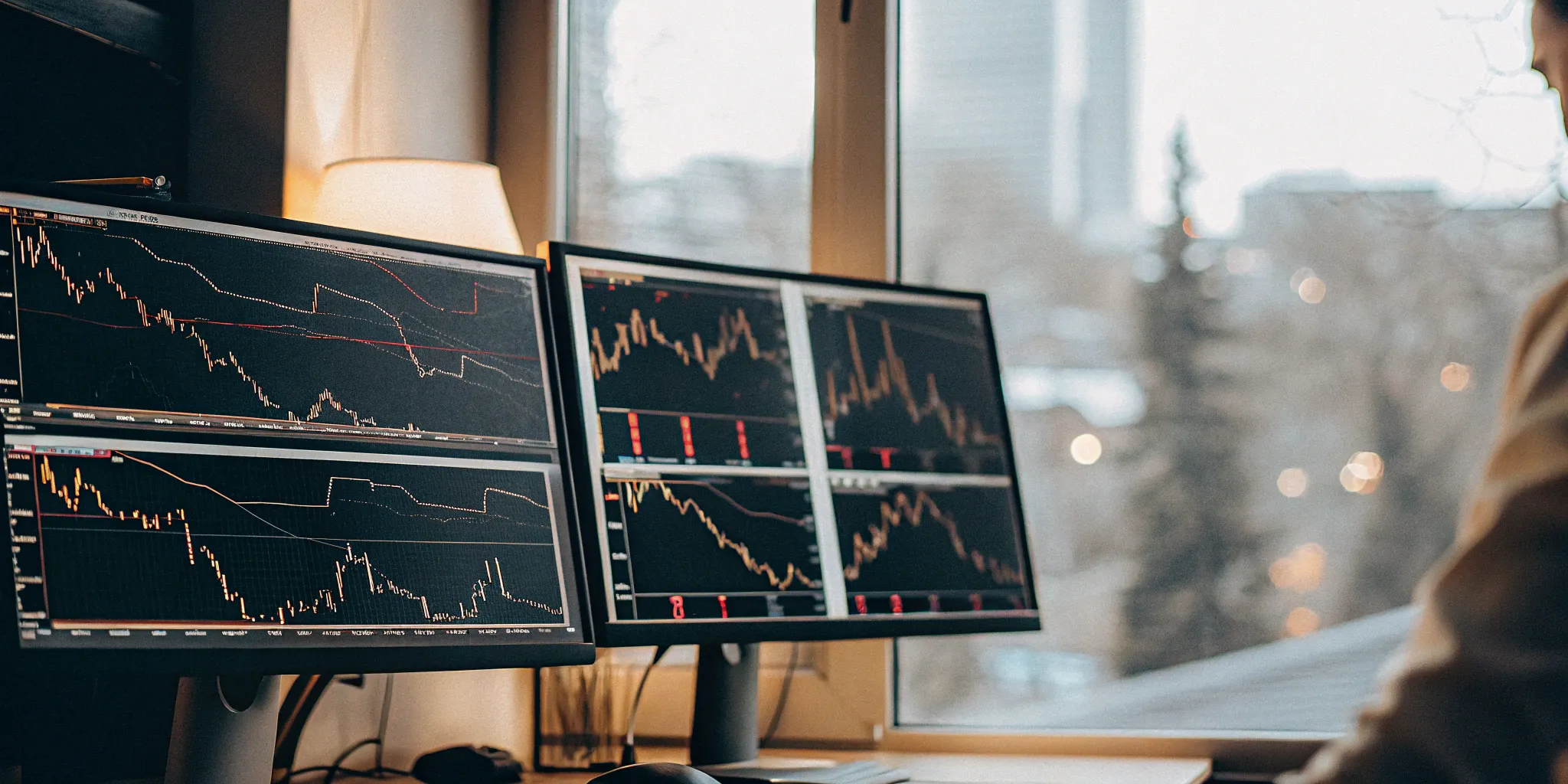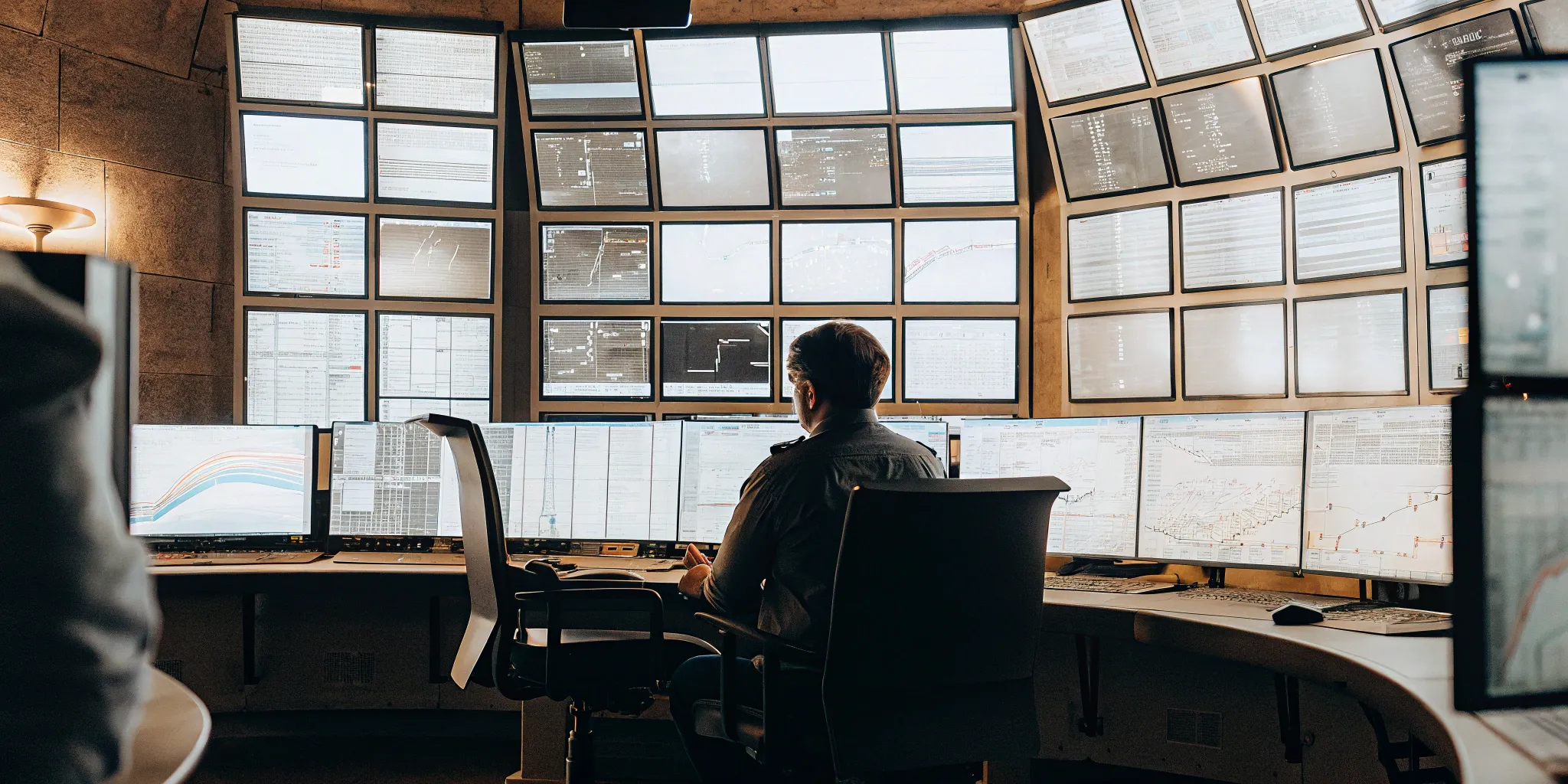The forex market, a 24/7 global exchange, presents incredible opportunities but demands constant vigilance and quick decision-making. Staying ahead of the curve requires more than just traditional charts and indicators; it demands leveraging the power of artificial intelligence. AI in forex is no longer a futuristic concept; it’s a present reality transforming how traders interact with the currency markets. From algorithmic trading systems that execute trades at lightning speed to predictive analytics that forecast market movements, AI offers a range of tools to enhance your trading strategies. This article explores the key benefits, challenges, and ethical considerations of using AI in forex, providing a practical roadmap for integrating this transformative technology into your trading arsenal.
Key Takeaways
- AI empowers forex traders: Automating analysis, enhancing decisions, and improving risk management are all within reach, but remember that AI tools augment your skills, not replace your judgment.
- AI in forex isn’t foolproof: Be mindful of potential downsides like over-reliance on AI, algorithmic errors, and unexpected market events. Balance AI insights with your own market understanding for a more robust approach.
- The forex market and AI are constantly evolving: Regularly evaluate your AI tools’ performance, stay updated on emerging technologies, and adapt your strategies to thrive in this dynamic landscape.
What is AI in Forex Trading?
AI in forex trading uses artificial intelligence tools like machine learning algorithms to analyze market data and execute trades. Instead of relying solely on human analysis and decision-making, AI can process vast amounts of information, identify patterns, and execute trades at speeds and frequencies impossible for a human trader. This makes AI an attractive tool for those looking to automate trading strategies and potentially improve returns.
What is AI’s Role in Forex?
Artificial intelligence is transforming the forex market, a massive arena with trillions of dollars exchanged daily. AI automates many aspects of forex trading, from conducting technical and fundamental analysis to executing trades. This includes high-frequency trading (HFT), where AI executes many trades in fractions of a second. AI can analyze historical data, current market conditions, and news sentiment to inform trading decisions. This data-driven approach helps remove emotional bias from trading, leading to more disciplined and potentially profitable outcomes. While AI offers advantages in speed and efficiency, it also presents challenges, such as the potential for algorithmic errors and the need for robust risk management. Finding the right balance between AI automation and human oversight is key to successful AI forex trading. You can learn more about AI’s impact on the financial markets from sources like ION Group.
Which Key AI Technologies are Transforming Forex?
Several key AI technologies are driving the transformation of forex trading. Algorithmic trading systems use pre-programmed instructions to execute trades based on specific criteria, such as price movements or technical indicators. Predictive analytics leverages statistical models and machine learning to forecast future market behavior, helping traders anticipate potential opportunities. AI algorithms, trained on vast historical datasets, can identify subtle patterns and correlations that might be missed by human traders. Natural language processing (NLP) analyzes text data from news articles, social media, and other sources to gauge market sentiment and its potential impact on currency prices. Real-time data analytics provides up-to-the-second market information, enabling AI systems to react quickly to changing conditions and execute trades with precision. They can also adapt to changing market conditions, adjusting their strategies based on real-time feedback and performance analysis. This adaptability is crucial in the dynamic forex market, where volatility and unexpected events are commonplace. AI can also play a significant role in risk management by quickly spotting risky market shifts and finding correlations between currencies. This can lead to better risk mitigation and potentially higher profits.
Benefits of AI-Powered Forex Trading
AI is transforming the forex market, offering a range of advantages for traders of all levels. From enhancing decision-making to improving risk management and providing deeper market insights, AI tools are changing how we interact with the currency markets. Let’s explore some key benefits:
How AI Enhances Forex Decisions and Efficiency
AI excels at automating time-consuming tasks. Think analyzing market data and executing trades, freeing you to focus on higher-level strategies. This includes high-frequency trading (HFT), where AI executes large volumes of trades within milliseconds, capitalizing on fleeting market opportunities. AI algorithms, trained on vast historical datasets, can predict market movements and identify potentially profitable opportunities like arbitrage. These algorithms continuously adapt to changing market conditions, ensuring your trading strategies remain relevant and effective.
How AI Improves Forex Risk Management
Managing risk is crucial in forex, and AI provides powerful tools to do so. AI algorithms can identify and mitigate potential threats by analyzing market volatility and other factors. They can optimize position sizes, ensuring you’re not overexposed in any single trade. AI’s ability to dynamically adjust trading parameters, such as stop-loss orders, helps protect your capital during market fluctuations. Beyond these core functions, AI can quickly spot risky market shifts and uncover hidden correlations between currencies. For more on how AI is impacting risk management in finance, check out this insightful article.
How AI Delivers Better Data Analysis and Market Insights
One of AI’s greatest strengths lies in its ability to analyze massive datasets and extract meaningful insights. AI algorithms can sift through vast amounts of historical data, identifying trends and patterns that would be nearly impossible for a human trader to spot. This leads to more informed trading strategies and the potential for developing customized client solutions. AI’s analytical capabilities extend beyond traditional market data; it can also process news sentiment and other alternative data sources to provide a more comprehensive view of the market. As Forex SEO points out, the ability to quickly analyze large datasets and extract accurate insights is key to successful forex trading. You can learn more about how AI is used in forex trading in their comprehensive guide.
Challenges and Risks of AI in Forex
While AI offers exciting possibilities in forex, it’s crucial to understand the potential downsides. Ignoring these can lead to costly mistakes and unrealistic expectations. This section explores the key challenges and risks associated with using AI in forex trading.
Risks of Over-Reliance on AI
One of the biggest pitfalls is over-reliance on AI. Thinking an AI system can flawlessly predict market movements and generate profits without human intervention is a dangerous misconception. Markets are complex, influenced by countless factors, and prone to sudden shifts. Blindly following AI-generated signals without considering broader market context or applying your own critical thinking can lead to significant losses. Remember, AI is a tool to enhance your decision-making, not replace it entirely. Maintaining a balance between AI insights and human oversight is essential for long-term success in forex. Over-dependence on any single tool, no matter how sophisticated, can create vulnerabilities in your trading strategy.
How to Manage Algorithmic Errors and Market Volatility with AI
Even the most advanced AI algorithms can have errors or biases. These can stem from flaws in the data used to train the AI, limitations in the algorithm’s design, or unexpected market events. It’s important to understand that AI predictions are based on probabilities, not certainties. Market volatility, a constant in forex, can further complicate matters. Sudden price swings can throw off even the most well-trained AI, leading to inaccurate predictions or delayed signals. To mitigate these risks, focus on robust risk management practices. This includes setting stop-loss orders, diversifying your portfolio, and regularly reviewing and adjusting your AI system’s parameters. AI can actually be a powerful tool for managing volatility by quickly identifying risky market shifts and finding correlations between currencies. This allows for better risk mitigation and potentially higher profits. However, the complexity of some AI algorithms can make them difficult to understand, potentially hindering trust in the insights they generate. Learn more about the impact of AI on financial markets.
How AI Adapts to Unexpected Market Events
The forex market is constantly evolving, with unexpected events like news announcements, geopolitical shifts, or economic crises frequently impacting currency prices. AI systems, trained on historical data, may struggle to adapt to these unforeseen circumstances. Their predictions can become inaccurate, and their effectiveness can diminish. To address this, choose AI systems that are designed for adaptability and can incorporate real-time data feeds. Look for features like dynamic risk management tools that adjust to changing market conditions. While AI can analyze massive datasets to identify trends and patterns humans might miss, leading to better trading strategies, it’s crucial to remember that unforeseen events can render AI predictions inaccurate. Therefore, relying solely on AI is not advisable. A balanced approach that combines AI insights with human judgment and adaptability is key to navigating the dynamic nature of the forex market.
Integrating AI into Your Forex Strategy
Successfully integrating AI into your forex trading strategy involves a balanced approach. It requires selecting the right tools, understanding AI’s limitations, and continuously adapting your approach. This section provides practical guidance on how to effectively merge AI’s analytical power with your trading expertise.

Choose the Right AI Tools and Platforms
Start by identifying AI tools aligned with your trading goals and experience level. If you’re looking to automate EUR/USD trades, a platform like FN Capital offers AI-driven solutions that remove emotional decision-making and the need for constant market monitoring. For those interested in exploring different strategies, consider AI trading bots with backtesting features. These tools let you test strategies against historical data and observe how various performance indicators play out. Remember to research various platforms, compare features, and choose a reputable provider that suits your specific needs.
Balance AI Insights with Human Judgment
AI is a powerful tool, but it’s not a replacement for human input. Think of AI as augmenting your capabilities, not dictating your every move. The most successful forex traders find a synergy between AI’s analytical prowess and their own market understanding. AI excels at analyzing vast datasets and executing trades without emotional bias. However, your human intuition and experience are crucial for interpreting qualitative information, assessing market sentiment, and making nuanced decisions that AI might miss. While AI can process numbers, your understanding of geopolitical events or economic shifts can inform your overall strategy in ways AI can’t.
Continuously Learn and Adapt Your AI Forex Strategy
The forex market is dynamic, so your AI strategy should be too. Regularly evaluate the performance of your AI tools using key metrics. Pay close attention to your return on investment (ROI), hit rate, maximum drawdown, Sharpe ratio, average trade duration, and slippage. These metrics provide valuable insights into how well your AI tools are performing and where adjustments might be needed. As you gain more experience, refine your approach, and explore new AI tools and techniques to stay ahead of the curve. The world of forex, especially with AI, is constantly evolving, so continuous learning is essential for long-term success. Focus on building a solid foundation and adapting your strategies as you gain experience.
Evaluating AI Forex Trading Systems
Before incorporating any AI system into your forex trading, thoroughly evaluate its potential. A robust evaluation process hinges on understanding key performance metrics, recognizing warning signs, and rigorously backtesting the system. This section provides a practical framework for assessing AI forex trading systems.
Key Performance Metrics for AI Forex Systems
Evaluating an AI forex system requires a deep dive into its performance metrics. These metrics offer valuable insights into the system’s historical success and potential future behavior. Focus on these key indicators:
- Return on Investment (ROI): This fundamental metric measures the system’s profitability. A higher ROI indicates better performance, but always consider the associated risk.
- Hit Rate: This represents the percentage of winning trades. While a high hit rate is desirable, consider the size of winning and losing trades alongside this metric. A system with a lower hit rate but larger winning trades can still be profitable.
- Maximum Drawdown: This measures the largest peak-to-trough decline during a specific period. It’s a critical indicator of risk and helps you understand the potential for losses. A lower maximum drawdown suggests better risk management. Learn more about maximum drawdown.
- Sharpe Ratio: This metric assesses the risk-adjusted return of the system. It helps you understand the return you’re getting for each unit of risk taken. A higher Sharpe ratio generally indicates a better risk-reward profile. Understand the Sharpe Ratio.
- Average Trade Duration: This measures the average time a trade is held. Understanding trade duration can help you assess the system’s trading style and its alignment with your investment goals.
- Slippage: This refers to the difference between the expected price of a trade and the actual execution price. High slippage can significantly impact profitability, so choose systems that minimize slippage. Trading the most liquid forex pair, EUR/USD, can help mitigate slippage. Explore EUR/USD trading.
AI Trading Indicator offers further insights into evaluating AI forex indicators.
Red Flags and Warning Signs in AI Forex
While AI offers exciting opportunities in forex, be aware of potential pitfalls. Look out for these red flags:
- Unrealistic Promises: Be wary of systems promising guaranteed profits or exceptionally high returns with minimal risk. No system can perfectly predict market movements.
- Lack of Transparency: A reputable AI forex system should provide clear explanations of its methodology, including the data used, the algorithms employed, and the risk management strategies.
- Overfitting: This occurs when a system is trained too closely on historical data, resulting in excellent past performance but poor future results. Ensure the system is validated on unseen data. Learn more about overfitting.
- No Independent Verification: Look for systems with verified track records from reputable third-party sources. This adds credibility and helps ensure the claimed performance is accurate.
A comprehensive assessment, considering both AI and financial perspectives, is crucial for evaluating model performance, as highlighted in this research on AI in financial trading.
Backtest and Validate Your AI Forex System
Before deploying any AI forex system with real capital, thorough backtesting and validation are essential. This involves testing the system on historical data to assess its performance under various market conditions.
- Use Quality Historical Data: Ensure the backtesting data is accurate, comprehensive, and representative of real market conditions. Find quality historical forex data.
- Test Different Market Scenarios: Don’t just rely on favorable market conditions. Test the system during periods of high volatility, market crashes, and unexpected events.
- Forward Testing: After backtesting, validate the system’s performance on a more recent period of historical data that wasn’t used in the initial testing. This helps confirm the system’s robustness.
- Consider Out-of-Sample Data: Testing the system on data completely outside the training and validation sets provides the most rigorous evaluation of its real-world potential.
Remember, continuous learning is key in the evolving world of forex and AI. Equip yourself with the right tools and knowledge to make informed decisions. Explore AI trading tools and technologies.
Common Misconceptions About AI in Forex
Let’s clear up some common misconceptions about AI in forex trading. It’s easy to get caught up in the hype, so understanding the realities of AI is crucial for setting realistic expectations and making informed decisions.
Debunking the Myth of Guaranteed Profits with AI
One of the biggest misunderstandings about AI in forex is the idea of guaranteed profits. While AI can significantly improve your trading outcomes, it’s not a magic bullet. No trading system, no matter how sophisticated, can eliminate risk entirely. FN Capital’s FAST AI algorithm is designed to capitalize on market opportunities and mitigate risks, but remember that market volatility always plays a role. Think of AI as a powerful tool that enhances your decision-making, not a guaranteed path to riches. Backtesting offered by many AI trading bots allows you to test strategies with historical data. However, past performance isn’t a foolproof predictor of future success. Like any investment strategy, using AI trading bots carries inherent risks.
Understand AI’s Limitations in Forex
AI is incredibly powerful at processing vast amounts of data and executing trades with speed and precision. However, it’s essential to understand its limitations. AI thrives on data, and its predictions are based on patterns identified in past market behavior. Unforeseen events, like sudden geopolitical shifts, can throw off even the most advanced AI. Don’t rely solely on AI’s predictions; human intuition and experience still have a vital role to play. AI excels at the quantitative aspects of trading—speed, accuracy, and unemotional execution—while humans bring qualitative insights, like interpreting news events and understanding broader market sentiment. Finding the right balance between AI and human input is key to successful forex trading.
Why Human Oversight Remains Necessary in AI Forex
Successfully integrating AI into your forex strategy requires more than just choosing the right software. It demands careful planning, a deep understanding of the chosen AI tools, and a strong focus on risk management. While AI can automate many aspects of trading, human oversight is still essential. Regularly monitor your AI’s performance, adjust parameters as needed, and be prepared to intervene in exceptional market circumstances. The most effective approach to AI in forex combines the strengths of both human and artificial intelligence. Blending technological expertise with sound human judgment is the key to long-term success in this dynamic market.
Ethical Considerations in AI Forex Trading
AI’s role in forex trading keeps growing, so it’s essential to address the ethical implications that come with this powerful technology. Building trust and ensuring fairness requires a proactive approach to navigating potential biases, promoting transparency, and upholding regulatory standards.
Address Bias in AI Forex Models
AI models learn from the data they’re fed. If that training data contains biases, the AI system will likely replicate and even amplify those biases in its trading decisions. This can create unfair advantages and distort market dynamics. Regularly auditing your AI model for bias and using diverse, representative datasets are crucial steps in building ethical AI trading systems. Consider independent, third-party reviews to further validate fairness and identify blind spots.
Ensure Transparency in AI Forex Decisions
AI’s complexity can make it difficult to understand how a specific trading decision was reached. This “black box” effect can erode trust, especially when significant financial outcomes are at stake. While some level of complexity is inherent in AI, prioritizing explainability is key. Look for AI systems that offer insights into their decision-making processes. Human oversight remains essential to validate AI’s recommendations and ensure accountability. A balance of AI insights and human judgment builds confidence and allows for more responsible trading practices.
Maintain Regulatory Compliance and Responsible AI Use
The regulatory landscape for AI in finance is constantly evolving. Different jurisdictions are adopting varying approaches to AI governance, making it crucial to stay informed and adapt. Working with legal experts who specialize in AI and financial regulations can help you remain compliant and avoid potential penalties. Prioritizing responsible AI use goes beyond simply meeting regulatory requirements. It means actively considering the broader societal impact of your AI trading strategies and striving for ethical, sustainable practices.
The Future of AI in Forex Trading
The intersection of artificial intelligence and forex trading is constantly evolving. Understanding emerging trends and adapting to them is crucial for staying ahead. Let’s explore what the future holds for AI in forex.
Emerging AI Technologies and Their Impact on Forex
AI is rapidly transforming the forex market, creating exciting opportunities while also presenting new challenges. Advanced machine learning models, like those using deep learning and neural networks, are becoming increasingly sophisticated at predicting market movements and identifying profitable trading opportunities. These algorithms, trained on vast historical datasets, can adapt to changing market conditions and refine their strategies over time. This evolution in AI capabilities is expected to accelerate, leading to more efficient and potentially more profitable trading. However, it also raises important ethical considerations and the need for responsible AI development. Finding the right balance between leveraging AI’s power and maintaining human oversight will be key to navigating this evolving landscape.
Prepare for AI-Driven Market Dynamics
As AI becomes more prevalent in forex, market dynamics will inevitably shift. AI algorithms can rapidly identify and respond to market fluctuations, uncover hidden correlations between currencies, and even detect fraudulent activities. This enhanced speed and accuracy can lead to better risk mitigation and potentially higher profits. We can also expect to see increased market efficiency as AI identifies and eliminates arbitrage opportunities more quickly. This AI-driven environment will demand greater adaptability and a deeper understanding of how these technologies influence market behavior. Retail traders will need to carefully select AI trading platforms that align with their individual trading styles and experience levels.
The Evolution of Human-AI Collaboration in Forex
The future of forex trading isn’t about AI replacing humans; it’s about humans and AI working together. AI excels at processing vast amounts of data with speed and accuracy, executing trades without emotional bias, and identifying patterns that humans might miss. Humans bring intuition, experience, and the ability to interpret qualitative information, such as geopolitical events and news sentiment, that AI may struggle with. A successful forex strategy will effectively combine these strengths. This collaborative approach requires traders to develop new skills in managing and interpreting AI-generated insights, while also understanding AI’s limitations. Successful AI integration also demands careful planning, the right tools, and a strong focus on risk management. As AI continues to evolve, this human-AI partnership will become increasingly critical for consistent success in the forex market.
Getting Started with AI in Forex
So, you’re intrigued by the potential of AI in forex and ready to see how it can improve your trading? Great! Whether you’re a seasoned trader or just starting out, integrating AI can feel like a big leap. This section breaks down how to get started, offering practical first steps and helpful resources for beginners.
First Steps for AI Forex Beginners
Getting started with AI in forex doesn’t require you to become a coder or AI specialist. Begin by understanding the basics. AI is changing the forex market, automating key aspects of trading, from split-second high-frequency trading (HFT) to complex market analysis. A structured approach is essential. Define your trading goals—what are you hoping to achieve with AI? Then, research and choose a reliable and user-friendly AI trading platform that fits your goals and experience level. Remember, a balanced approach is important. While AI offers powerful tools, combining these insights with your own expertise and judgment will create more robust trading decisions. Don’t jump in without considering the benefits and risks of using AI in forex.
Resources for Further Learning and Development in AI Forex
AI trading is becoming more accessible to retail traders through various platforms, each designed for different trading styles and levels of experience. Explore resources like the “5 Best AI Forex Trading Platforms” to find what works for you. Learn more about how AI algorithms analyze huge amounts of market data, finding hidden trends and patterns that human traders might miss. This data-driven approach can create more refined trading strategies and personalized solutions for clients. As you explore different platforms, pay close attention to fees, account types, and—most importantly—the platform’s approach to risk management. No matter your chosen strategy, managing risk effectively is crucial in the forex market. Continuous learning is key in the constantly changing world of AI and forex. Stay informed about new developments, refine your strategies, and keep exploring how AI can improve your trading.
Related Articles
- Forex AI Trading: A Practical Guide – FN Capital
- AI-Powered Trading Solutions: An Investor’s Guide
- AI’s Impact on Algo Trading
- How AI Can Enhance Investment Strategies – FN Capital
Frequently Asked Questions
Is AI forex trading suitable for beginners? Absolutely! Many AI forex platforms offer user-friendly interfaces and automated features perfect for beginners. You don’t need to be a coding expert or have years of trading experience to get started. Look for platforms with educational resources, demo accounts, and excellent customer support to guide you. However, even with AI assistance, understanding basic forex principles is recommended.
What are the biggest risks of using AI in forex? Over-reliance is a major risk. AI is a tool, not a guaranteed money-maker. Blindly following AI signals without understanding the broader market context can lead to losses. Also, be aware of potential algorithmic errors. Even the best AI can sometimes make mistakes, so robust risk management is crucial. Unexpected market events can also impact AI performance, so staying informed and adaptable is key.
How do I choose the right AI forex tools? Start by defining your trading goals and experience level. Are you looking for fully automated trading or tools to assist your own analysis? Research different platforms, compare features and fees, and look for verified performance data. Consider whether you prefer a platform specializing in specific currency pairs or one offering a broader range of markets. Testing different platforms with demo accounts can help you find the best fit.
How much human involvement is needed in AI forex trading? The level of human involvement depends on your chosen strategy and platform. Some AI systems offer fully automated trading, while others act as assistants to your own analysis. Even with automated systems, human oversight is important. Regularly monitor performance, adjust settings as needed, and be prepared to intervene during unusual market events. Finding the right balance between AI and human input is key to success.
What are the ethical considerations of AI in forex? Bias in training data can lead to unfair outcomes, so using diverse and representative datasets is crucial. Transparency in AI decision-making is also important. Traders should understand how AI arrives at its recommendations. Finally, regulatory compliance is essential. Stay informed about evolving regulations and ensure your AI tools adhere to legal and ethical standards.





